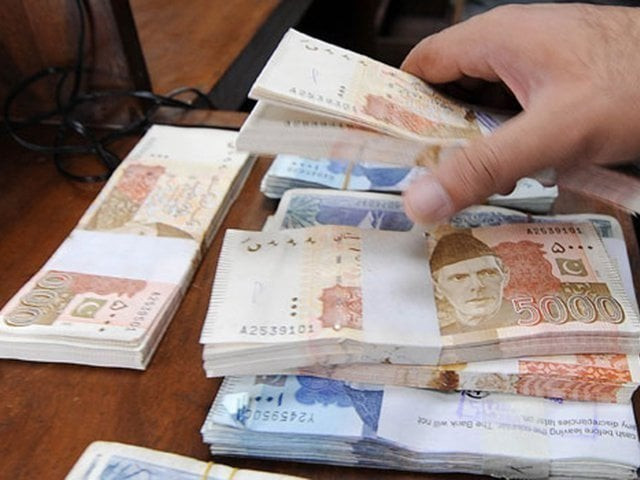
The deteriorating fiscal position will weaken Pakistan’s case before the International Monetary Fund (IMF) that is sending a mission to Islamabad on April 29. Both the sides are set to open staff-level talks for a bailout package from coming Monday, said sources in the finance ministry. New IMF mission chief Ernesto Rigo will lead the mission.
Preliminary estimates showed that the gap between expenditures and revenues hit 4.2% of gross domestic product in first nine months of the current fiscal year, said sources in the Ministry of Finance. In absolute terms, the budget deficit was equal to Rs1.61 trillion, they added.
The gap between expenditures and revenues during the nine-month period was equal to 75% of the revised annual target of 5.6% of GDP. Historical trends show that maximum expenditures are made in the last quarter (April-June) of the fiscal year.
In just the third quarter (January-March), the budget deficit widened by nearly 1.6% of GDP, the sources said.
A key reason behind the higher deficit was growing defence spending, high cost of debt servicing and low revenues generated by the Federal Board of Revenue and the State Bank of Pakistan.
In terms of the size of economy, the deficit in first nine months of this fiscal year was nearly at the level of last fiscal year when all the federal and provincial governments were on a spending spree before general elections.
In absolute terms, the budget deficit during the current fiscal year was nearly Rs140 billion or 10% higher than that booked during the same period of the last fiscal year.
Former finance minister Asad Umar on Wednesday admitted in the National Assembly that the budget deficit was definitely quite large and at a level that it should not have been. He also acknowledged that the deficit may even cross 6.5% of GDP or Rs2.5 trillion.
The Pakistan Muslim League-Nawaz (PML-N) government had closed its last year in power at a budget deficit of 6.6% of GDP or Rs2.26 trillion. The nine-month trend shows that the deficit could even hit 7% of GDP, the sources added.
Budget deficit hits six-year high at Rs1.03tr
There was hardly any meeting of the Economic Coordination Committee of the cabinet that did not approve supplementary budget requests by the line ministries. The government has apparently lost control over expenditures while its revenues are also not picking up, including non-tax revenues.
A recent report of the IMF stated that Pakistan’s budget deficit could widen to 7.2% of GDP or Rs2.8 trillion in the current fiscal year.
This deficit is Rs550 billion, or 1.6% of GDP, higher than what the finance ministry has estimated in its revised budget. This paints quite an alarming picture, suggesting that the PTI government will not only miss its first-year budget deficit target but will also borrow more than its estimates. The budget deficit and the current account deficit remain the two biggest challenges for Pakistan’s economy that have overshadowed the government’s economic performance in other areas. Inflation is the third main worry for the PTI government.
Prime Minister Imran Khan has already removed Asad Umar because of delay in non-resolution of these issues. The premier has picked technocrat-turned-politician Dr Abdul Hafeez Shaikh as Umar’s successor. Shaikh was the finance minister during the PPP’s last tenure from 2008 to 2013.
The statistics that Umar presented in the National Assembly on Wednesday to show that PPP’s performance was worse than any government puts a question mark over the abilities of Shaikh to overcome these challenges.
The budget deficit averaged 7% of GDP during the PPP’s five years in power, Umar stated in the National Assembly, adding that there were some years when it was 8.5-8.8% of GDP.
Umar admitted that the PTI government was struggling to meet its revenue targets. As of April 20, the FBR had collected only Rs2.86 trillion, which was equal to only 65% of the annual target.
He said the revenue targets which were not being met should also be a matter of concern but said the difference between the FBR’s targets and actual revenue collection was on average 8% less than that during the 2008-13 period of the PPP.
Umar said the public debt was also on the rise but added that there was only one government in Pakistan’s history that doubled the debt over its tenure. There was a 135% increase in debt during the PPP era, he said.
It appeared from Umar’s speech that he was targeting the new finance adviser more than settling political scores with PPP parliamentary leader Bilawal Bhutto Zardari.
Published in The Express Tribune, April 25th, 2019.
Like Business on Facebook, follow @TribuneBiz on Twitter to stay informed and join in the conversation.
















COMMENTS
Comments are moderated and generally will be posted if they are on-topic and not abusive.
For more information, please see our Comments FAQ